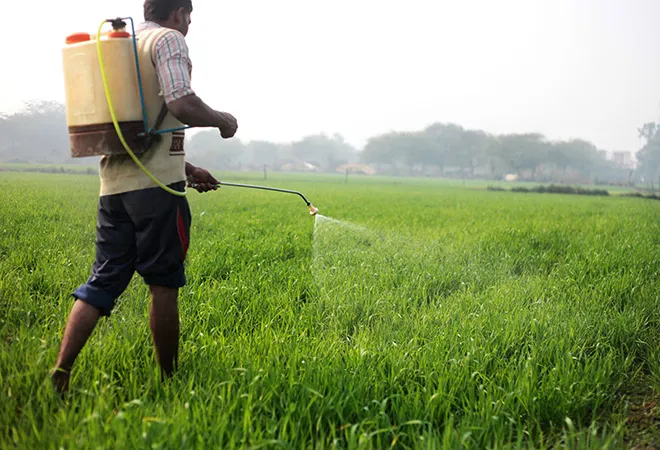 This is the 142nd in the series–The China Chronicles.
This is the 142nd in the series–The China Chronicles.
Malnutrition in China has undergone a significant transformation over the past few decades. Historically, China has had high rates of undernutrition, particularly in rural areas. In the 1990s, in China, the rate of
child undernutrition was high, with an estimated 32 percent of children under three years suffering from stunting—low height-for-age. However, in recent years, China has made significant progress in reducing the rate of
stunting in under five years, with the rate dropping
from 18.8 percent in 2002 to 4.8 percent in 2017. Rural areas of China, where poverty rates are higher, have
higher rates of undernutrition than urban areas.
However, with the country's rapid economic growth and urbanisation, the prevalence of undernutrition has decreased and the prevalence of overweight and obesity has increased. The majority of
overweight or obese people worldwide reside in China. According to a
2020 study, obesity among adults in China rose from7.1 percent in 2002 to 16.3 in 2020. In China, the predicted percentage of deaths from
noncommunicable diseases (NCDs) linked to being overweight and obese grew from 5.7 percent in 1990 to 11.1 percent in 2019. The increase in overweight and obesity is largely due to changes in dietary patterns and a shift towards a more sedentary lifestyle. Overnutrition has also contributed to a rising prevalence of diabetes in China. According to the
International Diabetes Federation, China had the largest number of adults with diabetes in the world in 2019, with an estimated 116.4 million cases.
China is facing water scarcity due to overuse, pollution, and climate change, posing a significant threat to food security.
Malnutrition and food security are closely linked issues in China, and addressing one requires addressing the other. While China has made
significant progress in improving rates of undernutrition, the country still faces significant challenges in ensuring food security including the challenge of limited
arable land. China needs to feed 22 percent of the global population with only 7 percent of the global arable land. With urbanisation and industrialisation, arable land is being lost to development, putting pressure on food production and security. China is facing
water scarcity due to overuse, pollution, and climate change, posing a significant threat to food security. The availability of water for irrigation and other agricultural purposes is limited, and the competition for water among different sectors is intense.
Climate change is causing more frequent and severe extreme weather events, such as droughts and floods, which can significantly impact food production and food security.
Food safety is another major concern in China, with frequent incidents of contamination and adulteration. This not only affects consumers’ health but also undermines confidence in the food system and impacts the country's ability to export its products.
Mitigation measures
Addressing these challenges requires a comprehensive approach that includes investments in agricultural technology and infrastructure, the promotion of sustainable agriculture practices, and policies that address inequality and poverty. China has implemented a range of nutrition policies and programmes aimed at achieving the Sustainable Development Goal (SDG) of Zero Hunger by 2030. Here are a few of them:
- National Nutrition Plan (2017-2030): In 2017, China launched its National Nutrition Plan, which outlines a comprehensive strategy for improving nutrition and reducing malnutrition in the country. The plan aims to reduce the prevalence of stunting, wasting, and malnutrition in children under five years; increase the rate of exclusive breastfeeding; and improve the intake of fruits and vegetables.
- Food fortification: China has implemented a mandatory food fortification programme to address micronutrient deficiencies, particularly in vulnerable populations. The programme focuses on adding iodine, iron, zinc, and vitamin A to staple foods such as salt, soy sauce, and flour.
- Rural poverty alleviation: China's rural poverty alleviation programme aims to reduce poverty and improve food security in rural areas. The programme includes measures such as providing subsidies for agricultural inputs, improving infrastructure, and developing rural industries to increase incomes.
- Nutrition education: China has implemented nutrition education programmes in schools, communities, and healthcare settings to improve knowledge and awareness of healthy eating habits. The programmes aim to promote the consumption of a diverse range of foods; increase awareness of the importance of breastfeeding; and improve food safety and hygiene practices.
- Food safety regulations: China has strengthened its food safety regulations to reduce the risk of food contamination and adulteration. The government has implemented measures such as increasing inspections, establishing a national food safety monitoring system, and increasing penalties for violators.
- Sustainable agriculture: China has implemented programmes to promote sustainable agriculture practices, such as reducing the use of pesticides and fertilisers, increasing the use of organic farming methods, and promoting agroforestry.
Achieving the G20 Agenda
China has played an important role in the G20's efforts to address food security challenges. As a major agricultural producer and consumer, China has been actively involved in discussions and initiatives related to food security within the G20. China has participated in the
G20's Agricultural Market Information System, which aims to improve transparency and reduce food price volatility through the sharing of information on agricultural markets. In addition, China has contributed to the G20's efforts to address food waste, which is a significant challenge in achieving global food security. China launched the "
Clean Plate" campaign in 2020 to address food waste in the country, and this initiative has been highlighted as a model for other countries to follow.
China launched its National Nutrition Plan, which outlines a comprehensive strategy for improving nutrition and reducing malnutrition in the country.
China has also been involved in international cooperation on food security through its participation in the
Belt and Road Initiative (BRI), which includes investments in infrastructure and agriculture in developing countries. China has provided development assistance to other countries through initiatives such as the
South-South Cooperation Fund for Agriculture. Overall, China's active engagement in the G20's food security agenda reflects its commitment towards addressing the complex and interconnected challenges facing global food security.
Shoba Suri is a Senior Fellow with ORF's Health Initiative.
The views expressed above belong to the author(s). ORF research and analyses now available on Telegram! Click here to access our curated content — blogs, longforms and interviews.



 This is the 142nd in the series–
This is the 142nd in the series– PREV
PREV


